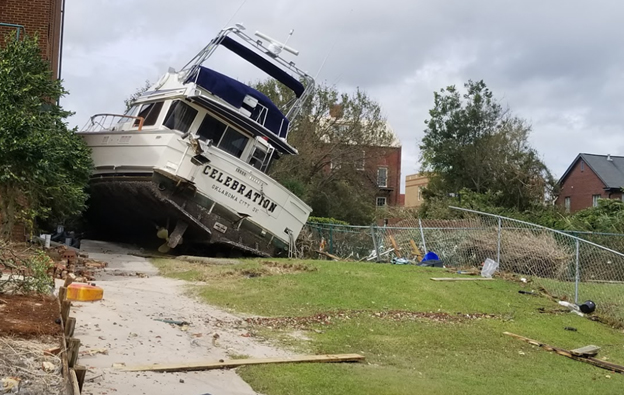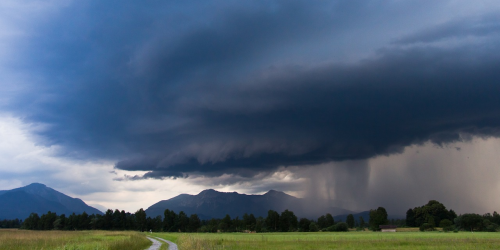The NOAA Climate Program Office’s Communication, Education, and Engagement (CEE) Division is announcing four new one-year projects in Fiscal Year (FY) 2019 that will help U.S. local governments, communities, businesses, and other stakeholders adapt and increase resilience to climate-related impacts and extreme events. The competitively selected projects total $150,000 in awards.
Billion-dollar disasters in the United States from extreme weather and climate events have more than quadrupled in number and cost since 1980. According to the 2018 State of the Climate report, tropical cyclones were well above average with over 10 percent of the named cyclones reaching Category 5 intensity level. To better prepare themselves and manage risks to valued assets from rising impacts, Americans are increasingly turning to NOAA for actionable climate information.

A key part of CEE’s mission is to help U.S. communities and businesses better understand and manage their climate-related risks and opportunities, for instance improving resilience to extreme events. To achieve this mission, CEE manages and maintains the U.S. Climate Resilience Toolkit (CRT), offering easy public access to federal science-based information, tools, data products, and expertise. These resources are designed to help U.S. decision makers, resource managers, municipal planners, business and policy leaders protect and manage their valued assets. Average annual CRT visit rates to use these resources have risen by roughly 53% per year over the last three years
Complementing the CRT, the CEE Division initiated a public-private partnership to establish the Resilience Ecosystem—an open and inclusive community of organizations and individuals who are interested in collaboration in order to improve the efficiency and effectiveness of climate adaptation and resilience-building practices so that, together, they may achieve much more than would be possible if each worked independently.
“CEE aims to help incentivize collaboration through these cooperative agreement awards,” said David Herring, CEE Division Chief. “Emphasis in this competition is on integration of existing tools, resources, and methodologies that result in improved efficiency, greater scalability, more interoperability, and new wholes that are greater than the sum of their parts.”
The four new projects funded by the CEE Division in FY19 are:
- Integrating Climate and Socioeconomic Data to Map Risk Exposure
This project will integrate two open-access tools: Neighborhoods at Risk, hosted by Headwaters Economics, and the Applied Climate Information System (ACIS), hosted by the NRCC. This will address users’ requests for more customizable outputs, such as visualization of selected thresholds (e.g., heat and precipitation), for any location in the U.S. and for user-selected predictive time periods.- PI: Patty Gude, Headwaters Economics
- Co-PI: Art DeGaetano, Northeast Regional Climate Center (NRCC) at Cornell University
- Connecting Decision-Makers with Vetted Adaptation Service Providers through an Open-Access Registry
This project will develop and publish a free, online Registry of Adaptation Service Professionals who are available to provide guidance and decision support to managers and planners from communities and organizations of all sizes as they seek to make climate-informed decisions. Specifically, this project will move the Registry beyond its current beta development phase.- PI: Jessica Hitt, EcoAdapt
- Co-PIs: Beth Gibbons and Rachel Jacobson, American Society of Adaptation Professionals (ASAP); and Lara Hansen, EcoAdapt
- Enhancing the Climate Explorer with Suggested Top Hazards
This project will enhance NOAA’s open-source Climate Explorer tool by adding a core feature from Azavea’s Temperate — a separate adaptation planning and decision-support solution that provides the ability to display potential future climate hazards for cities nationwide.- PI: Jessica Cahail, Azavea
- Co-PI: Jeff Hicks, Fernleaf Interactive
- Resilient Rural America Project, Phase 2
The Resilient Rural America Project (RRAP) proposes to accelerate rural climate adaptation by strengthening the ability of adaptation professionals to meet the needs of underserved rural jurisdictions, organizations, and businesses; and enable rural leaders to take action on their specific priority resilience strategies. In phase 2, the project will produce and publish a training module focused on practical steps to implement the resilience strategies called for in climate-ready comprehensive plans.- PI: Gwen Griffith, Model Forest Policy Program
- Co-PIs: Lara Hansen, EcoAdapt, and Barbara Cozzens, Key-Log Economics





